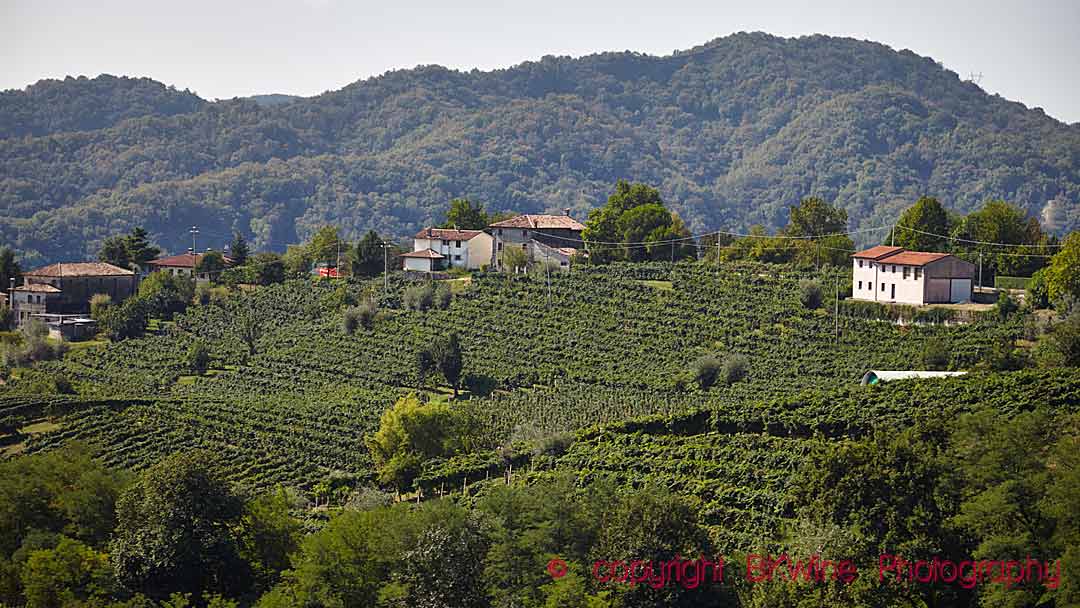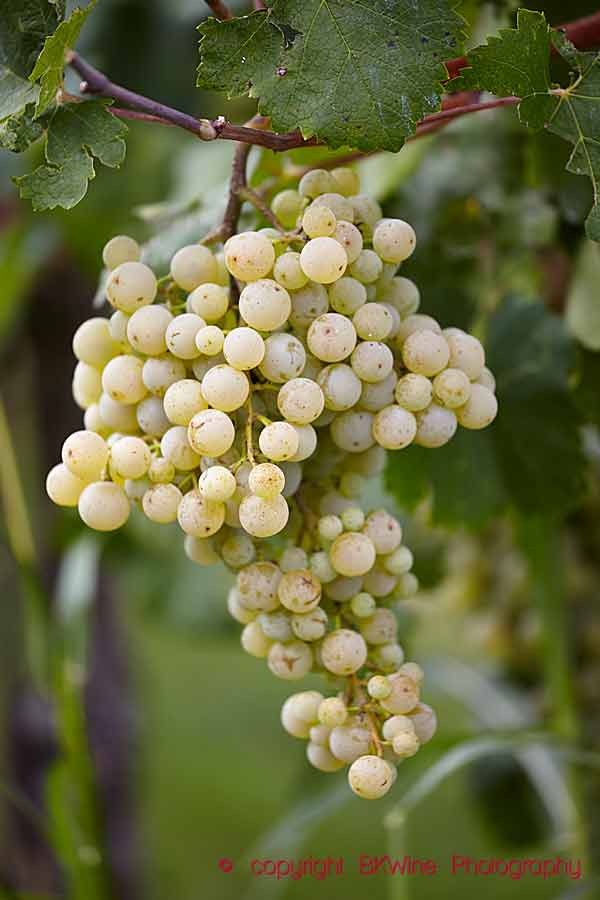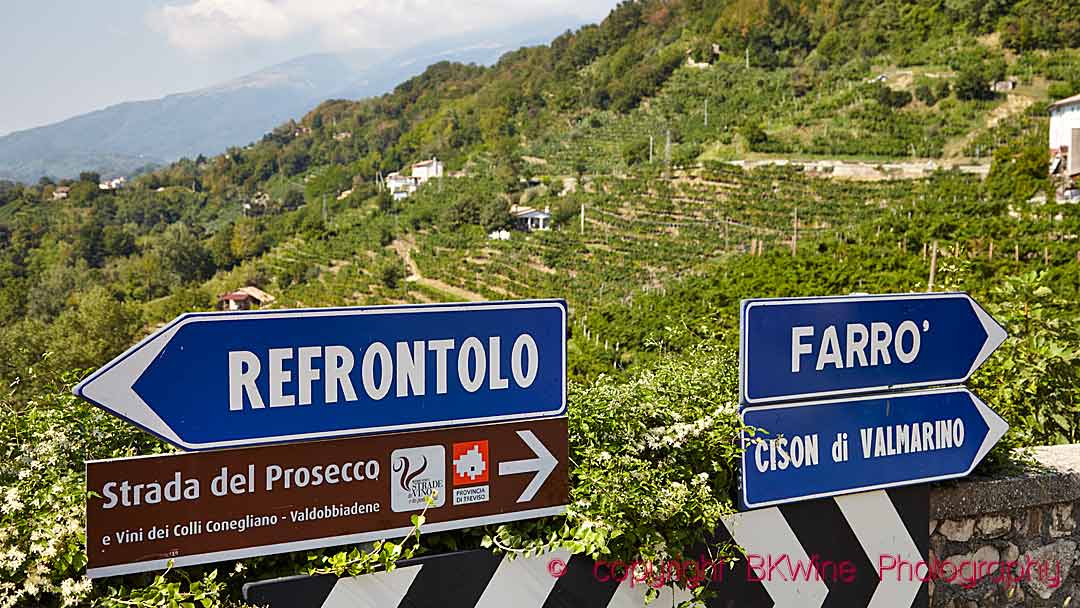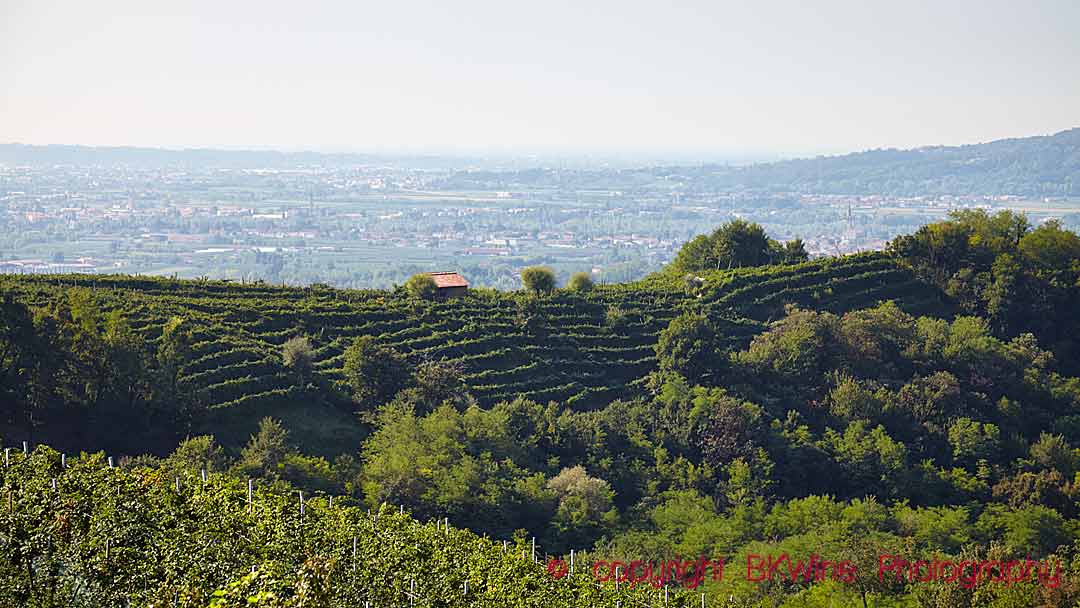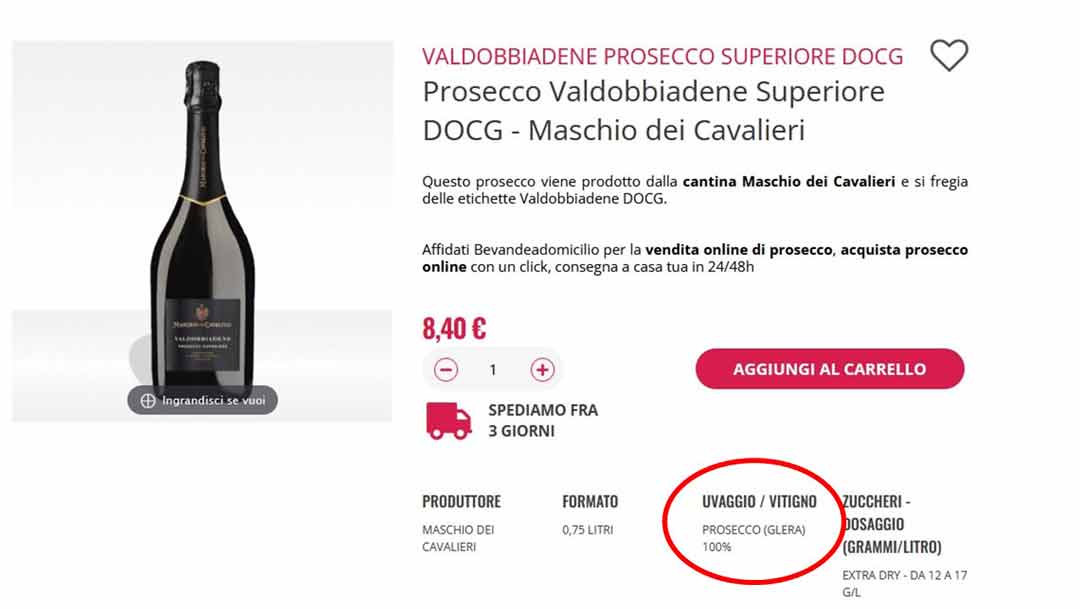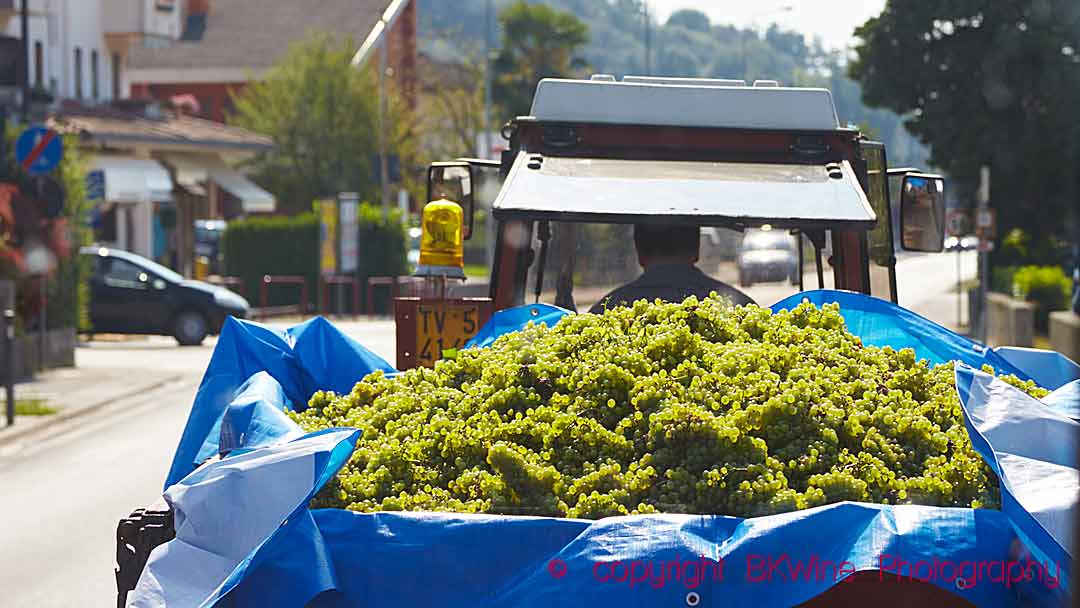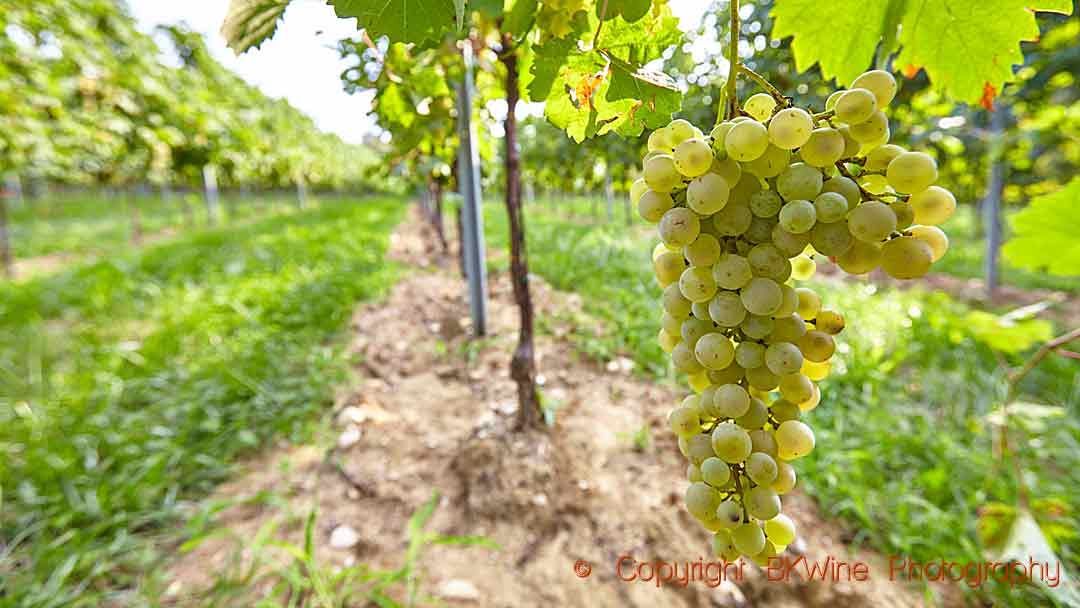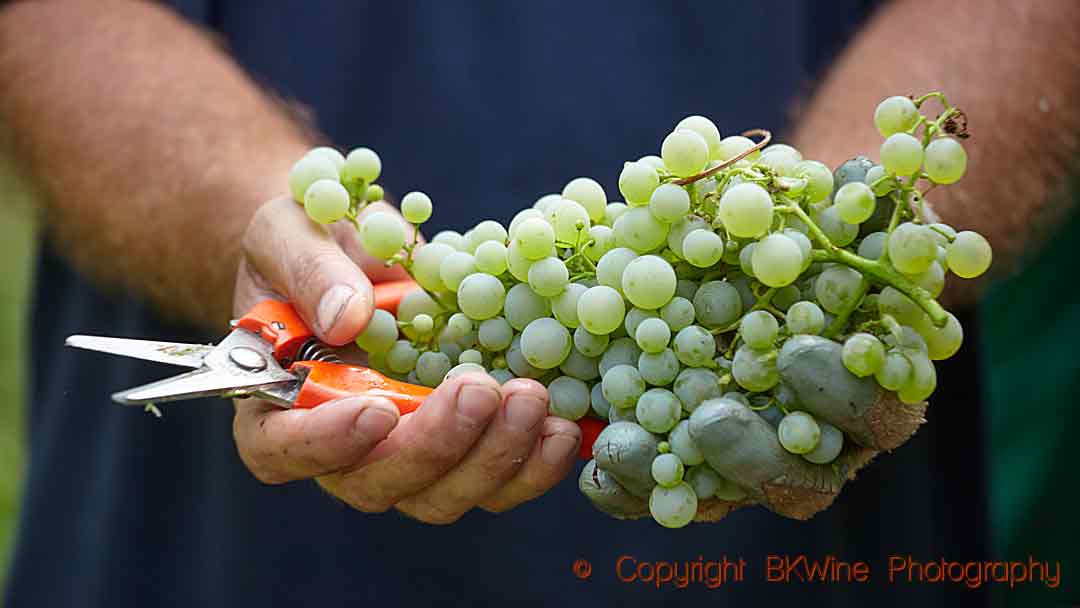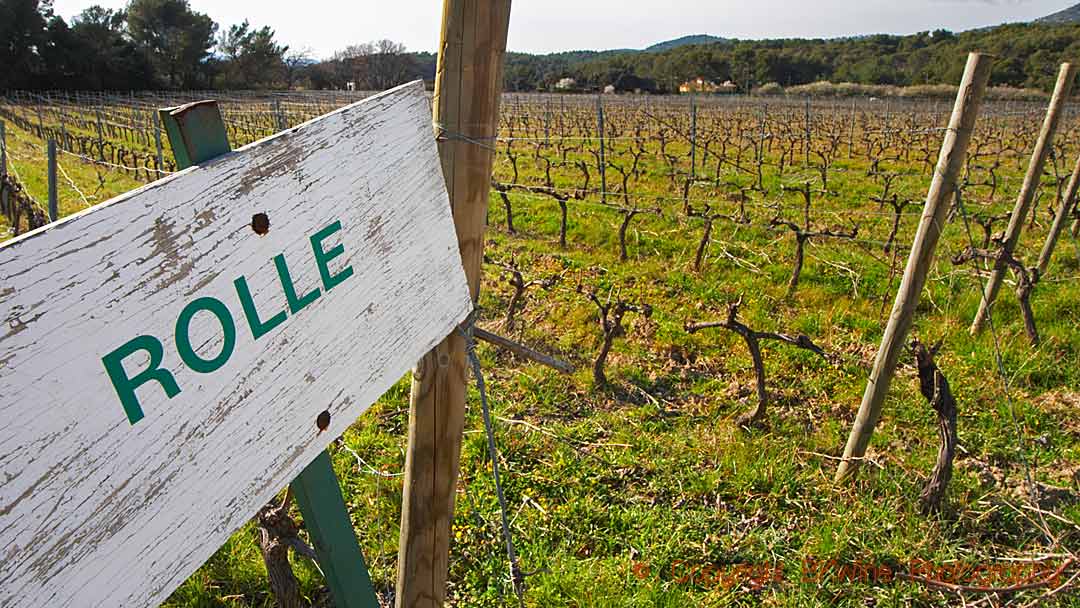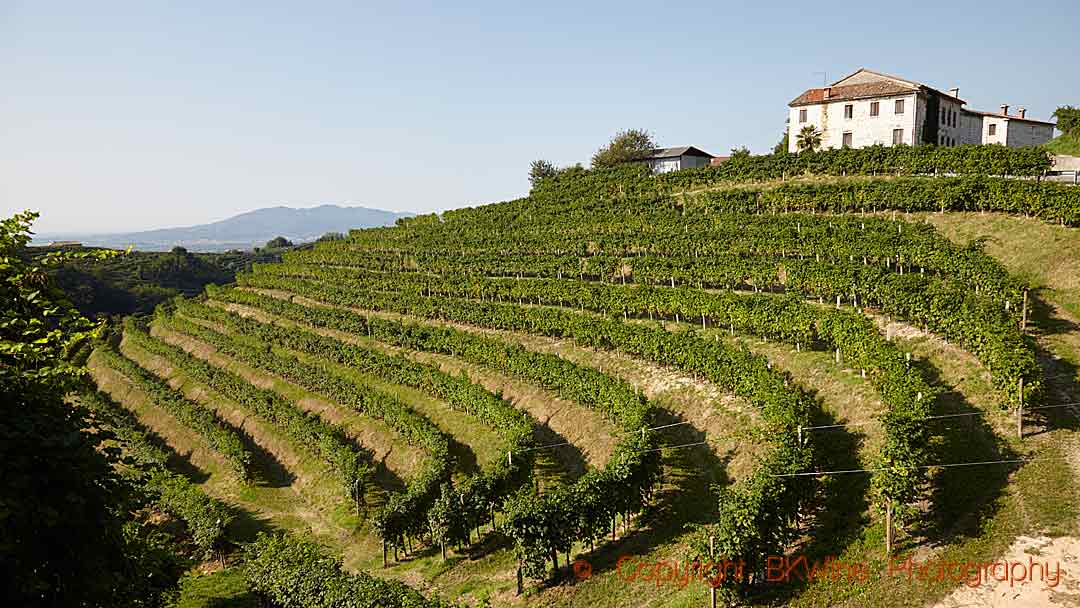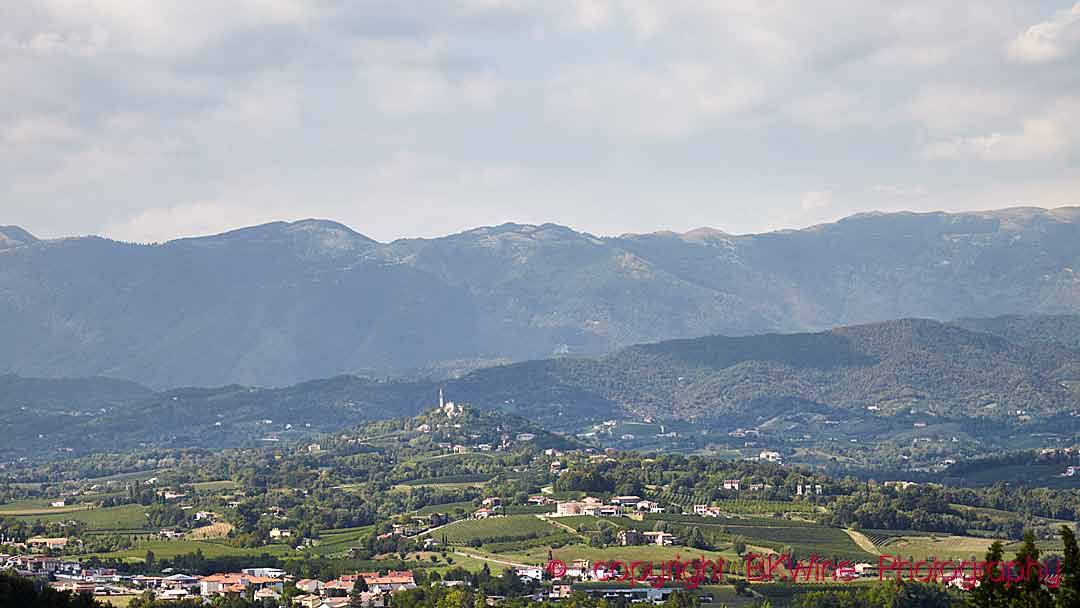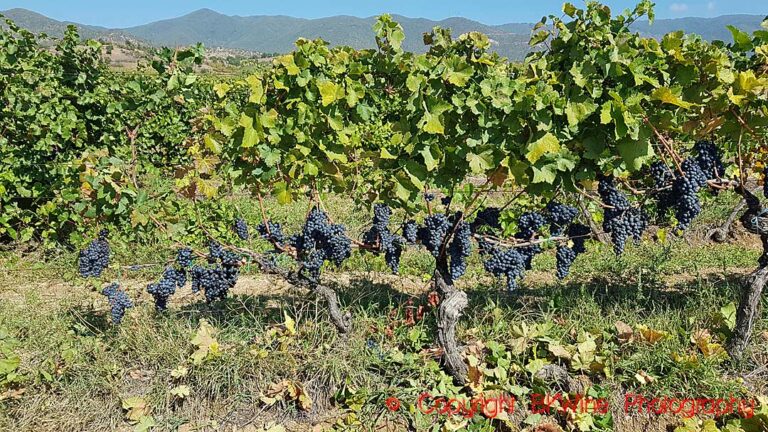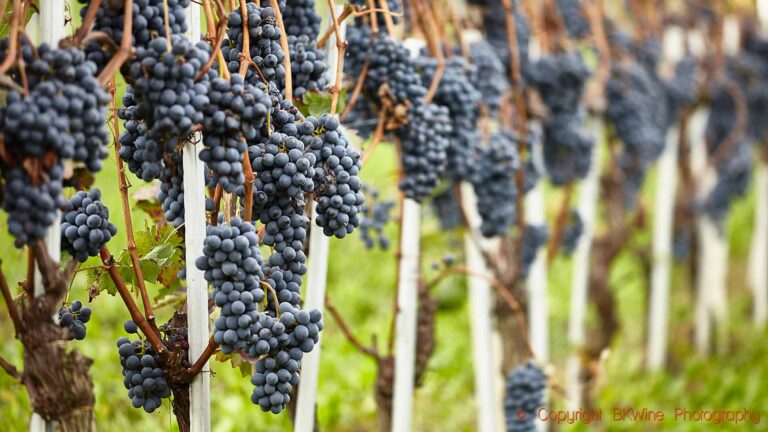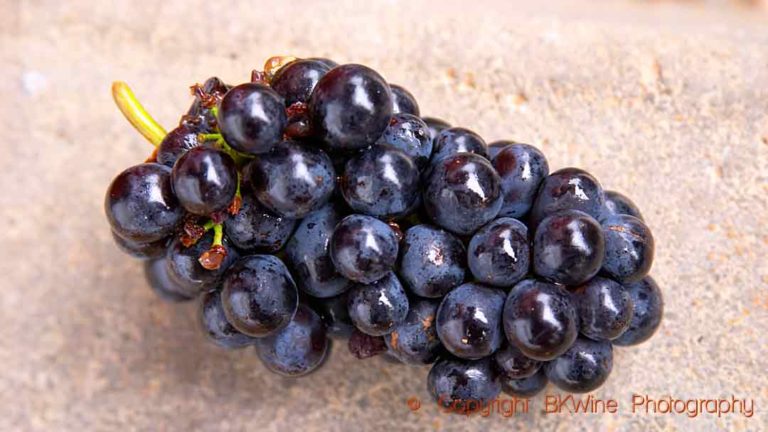Prosecco is today the world’s most-sold and most-consumed sparkling wine, with some 700 million bottles. It is made in the north-eastern corner of Italy in a region called Prosecco. Most of it is a light, slightly sweet, slightly refreshing sparkling wine. But some say that prosecco is actually a grape name. In Europe, it used to be a grape name until 2009, when it became a region. In some parts of the world, it still is a grape name. So, what’s the truth? Well, it depends. The story is one of many examples of how a wine region tries to protect something that they think is theirs. But is it really theirs? Or is it just another version of protectionism?
I think the first time I heard about this story was around 2009-2010 in an article on JancisRobinson.com. It explained how the prosecco grape name was turned into the name of a region. (The article appears no longer to be there, but there’s another interesting article on prosecco still there.)
Much more recently, I read about the prosecco “Is it a grape? Is it a region?”-debate in the Wine Spectator, in an article by Roger Camuto: Prosecco’s Identity.
This is a longer version of an article published on Forbes.com.
The two prosecco camps
Here are the two camps in the debate:
The grape name camp: Prosecco is the name of a grape variety and not a region. But in 2009, the official name of the grape was changed to glera (after some debate about what to choose), and a region now called Prosecco was invented.
The region camp: Prosecco is a unique wine with its own tradition and history coming from the Veneto region. The changes in the regulations in 2009 were only a rightful reaction to other regions and other countries trying to profit from Veneto prosecco’s fame, a simple name protection.
Today, the discussion is irrelevant. The “prosecco is a region” camp has won.
But the debate is interesting from a historical point of view, and it is also a telling illustration of how the wine industry is infused with protectionist initiatives that sometimes take over from good reason. With that comment, I think you can guess in which camp I sit.
Italians seem particularly deft at this game, but they are certainly not alone. In France, now after the wine law reform, you can put the grape name on the label of a bottle of vin de france (previously vin de table). Except if it is a wine made from the riesling grape. The Alsatians want to keep that for themselves. (But not only they. Aligoté, altesse, clairette, gewurztraminer, gringet, jacquère, mondeuse, persan, poulsard, savagnin, sylvaner and trousseau are also excluded from vdf labels.)
Despite much evolved (liberalised) legislation on planting new vines in new areas, the Champagne region has successfully opposed any such plantings anywhere near their region.
The more recent EU ruling on the grape name vermentino becoming exclusively Italian is another: Italians grab Vermentino now (by José Vuillamoz). (A very good read!) Nero d’avola and montepulciano are two other grapes in the line of sight. And so on.
A recent debate on Facebook on prosecco made me curious to dig a bit deeper.
Prosecco is (was?) the name of a grape
My view is that this is a very successful example of a region changing the rules in order to benefit itself and exclude others. Here’s how I would describe it:
Prosecco is the name of a grape, or, at least was a grape name for a very long time. This grape was mainly grown in north-eastern Italy, in the Veneto region, but not only. (Actually, several different varieties go under that “family” name.)
The most prominent producer of wine from the prosecco grape was the small region of Conegliano-Valdobbiadene, named after two towns north-west of Venice.
In the first decade of the new millennium (the years leading up to 2009), prosecco-based wines were becoming increasingly popular. Probably helped a bit by Paris Hilton launching Rich Prosecco in 2006, the trend for Aperol Spritz, the glory days of Champagne, and the general craze for bubbly wine.
The wineproducers of prosecco-based wine in Veneto did not like that others could benefit from the increasing popularity of prosecco (the grape), so they wanted to create an appellation for it to protect it. If there is an appellation, then others are not allowed to use that name.
But there was a problem:
The appellation rules state that a grape name cannot be an appellation in itself. Prosecco could not possibly become a DOC.
What to do?
Or is Prosecco a region?
The clever solution, implemented in 2009, was this:
Step 1: Change the name of the grape.
The grape name prosecco was removed from the official grape register. Instead, the name of the grape was officially declared to be glera, an up until then little-used synonym for the grape. (By the way, prosecco/glera is believed to originate from Istria in Croatia, according to the book Wine Grapes, not from Italy.)
Step 2: Create a new region.
There happened to be a village called Prosecco in Veneto. From what I understand, the village did not have any vineyards at the time (not sure if it has any now). It was not in the region of Conegliano-Valdobbiadene, where most of the prosecco was produced. But it was conveniently located in the Veneto region. So the authorities decided to “invent” a new geographic region given the name Prosecco, based on the village name.
So now Prosecco was a geographic name, and a DOC Prosecco could thus be created. The name prosecco became a monopoly for the region. And everyone had to call the grape “glera” instead. At least, everyone within the EU. To start with.
The village of Prosecco and the extension of the area
The village of Prosecco (2) was actually located near Trieste, at the very eastern edge of Italy. It was almost 150 kilometres away from the DOC Conegliano-Valdobbiadene (1) and did not produce prosecco wine. It used to be part of Slovenia (and the Austro-Hungarian Empire) where they made, and still make a wine called “prosek”. Trieste only became part of Italy in 1922.
The creation of the DOC Prosecco (3) also included a vast extension of the geographic area. The Conegliano-Valdobbiadene DOC covered a rather small arear around the two towns. The new DOC Prosecco region extended from the Slovenian border almost all the way to Verona.
This is illustrated on the Google Map image below.
The landscape in the original Conegliano-Valdobbiadene area is quite hilly, sometimes with steep terraced vineyards. Much of the land in the newly added extended DOC is flat and of a quite different character.
These rule changes were signed into law by the then minister of agriculture in the Berlusconi government, Luca Zaia, a Lega Nord (Northern League) politician. He was born in Conegliano and is now president of the Veneto region. It seems clearly to have been a move in support of his home region.
Big consequences
That Prosecco now is a DOC (with some DOCG sister-regions) has significant consequences. It is a protected name in the EU, and the grape name prosecco can no longer be used. And since the EU is actively protecting its geographical denominations through trade agreements, prosecco is forbidden as a grape name in more and more countries. It is, of course, now also forbidden to call a wine prosecco unless it comes from DOC Prosecco.
New Zealand recently signed a trade agreement with the EU that (among other things) means that they will, in a few years’ time, no longer use that grape name and no longer make a wine called prosecco.
Australia is the big hold-out that still has not abandoned the prosecco name for the grape. It is also planted in Argentina and some other countries, but I don’t know to what extent.
Australia, the country with the most prosecco/glera planted, that currently sells the wines (at least domestically) under the name prosecco, will have to consider its options.
It is also interesting to note that even people in Italy still sometimes use prosecco as the name of the grape. The image below is from an Italian online wine shop selling prosecco. The name of the grape is give as “prosecco”.
Economic, social and environmental impact
That prosecco is now selling some 700 million bottles has obviously had a very positive impact on the economy of the region. It has created employment and wealth that did not exist before.
But there is also another side of this, perhaps less considered.
Satisfying the enormous new demand for prosecco grapes, now called glera, has mean vast new plantings of vines. Agricultural land and forests have been replaced by vineyards. This has created issues with soil erosion, water resources, biodiversity, vineyard spraying contaminating residential areas etc. This is discussed, for example, here: A Copenhagen Business Scholl CBS Wire article: Bursting the bubble of success: How a global phenomenon changed a district into a bio-poor zone and created inequality and in a related research paper: Bursting the bubble? The hidden costs and visible conflicts behind the Prosecco wine ‘miracle’ by Stefano Ponte.
There’s another interesting research paper on how to sell more prosecco, published shortly after the name change, that describes in passing the modification of the grape name and then goes on to discuss how prosecco can be promoted more effectively: Strategies and Intepreting Models of a Reformed DOC: the Prosecco Case Study.
“But Prosecco has always referred to the wines from Veneto” – Has it?
Many people disagree with this description. Instead, they tend to say that prosecco has always (for a long time) been the name of the wine. It has been argued that it has been a DOC for much longer than 2009. That seems to me to be a misunderstanding. The argument also goes on to say that it is founded on a long history and tradition of a distinctive wine.
Wine has no doubt been made here since Roman times, but that this creates a historic base for the DOC Prosecco is doubtful. “In the 19th century, viticulture was still a secondary activity in this area, and small-scale production was mainly aimed at self-consumption. This situation remained relatively unchanged until the 1960s” according to Stefano Ponte’s article referenced above. And it is safe to say that the wine was sold as a product from the grape prosecco (if at all a grape or brand was mentioned) and not as something coming from a “Prosecco region”.
It is also hard to see how “tradition” can be a viable argument when the traditional production area was a small region close to Conegliano-Valdobbiadene some 40 km wide while the area now extends over 250 km east to west. Or, for that matter, the recently launched prosecco rosé. Based on pinot noir. A new invention. What tradition?
A historic perspective
I do not have access to historical archives in Italy, so I cannot go to the source. But I do have an extensive library of wine books that date back some years.
It seems that there has been, for quite some time, well before the 2009 regulation, a DOC called Conegliano-Valdobbiadene, which today is the most prestigious part of the Prosecco “region”. The official name may have been DOC Prosecco di Conegliano Valdobbiadene. Yes, possibly with prosecco in the name, but as a grape variety. But more likely just as “DOC Conegliano-Valdobbiadene. Checking the details, I discover that Conegliano Valdobbiadene was granted DOC in 1969 one of the early DOCs (and upgraded to DOCG in 2009, when DOC Prosecco was invented). The way it is sometimes worded, including “prosecco” (Prosecco di Conegliano-Valdobbiadene), makes it clear that it means prosecco (the grape) coming from (the region) Conegliano Valdobbiadene.
There has also apparently been an IGT including the name prosecco: Prosecco delle Venezie IGT. But again, this is the way that they in Italy mention a grape variety name in Italian denominations. Just like there is Merlot delle Venezie IGT or Chardonnay delle Venezie IGT. This is pretty much the same thing as saying “merlot from Napa Valley”, “pinotage from Stellenbosch”, or “chardonnay de Bourgogne”.
Looking in the reference books
I was curious to know more. Especially since some people were saying, “Prosecco has been a region since time immemorial (or at least the 19th century)”.
Since the internet is thinner on info from 15-20 years ago, maybe I’m missing something when I can’t find any mention of a prosecco region before 2009. So I pulled out some old (and new) books to see what they say.
Let’s start with the great reference book on grapes, Wine Grapes by Vuillamoz, Harding, and Robinson (2012): Look up glera, and it says, “see prosecco”. And under prosecco: “The dominant, rather neutral grape for Prosecco sparkling wine, probably Istrian. Misleadingly renamed glera for commercially protective reasons.” A good summary.
Wines of Italy, by Michele Shah (2006): It list prosecco under grape varieties (but not glera). It also lists several DOCGs and DOCs, including DOC Prosecco di Conegliano-Valdobbiadene, as made from prosecco, verdisio, bianchetta, perera, and prosecco lungo.
The Oxford Companion to Wine (2006), ed. Jancis Robinson: “Prosecco, white grape variety native to the Veneto region.”
Hugh Johnson’s Wine Companion (1983): It does not list a DOC Prosecco but it does have DOC Prosecco di Conegliano-Valdobbiadene with the description “the native prosecco grape gives a rather austere and charmless yellowish dry wine but responds well to being made fizzy.” The 2009 edition also notes, “light-hearted consumers all over Italy tend to use the term ‘prosecco’ as a way of ordering any glass of fizz”.
Vino by Burton Anderson (1982), the pioneer of serious writing about Italian wines, mentions it as a grape variety but has no mention at all of glera. He also notes it as the main grape of the DOC Prosecco di Conegliano-Valdobbiadene and mentions that Prosecco also comes as a still wine (it still does). In Burton’s more recent The Wine Atlas of Italy (1990) glera is also absent as a grape name, but prosecco is noted as the grape used in DOC Conegliano-Valdobbiadene.
New Encyclopedia of Wines and Spirits by Alexis Lichine (1974): “Prosecco di Conegliano-Valdobbiadene (D.O.C): A pleasant wine made from prosecco grapes.” And: “It is known either as Prosecco di Conegliano or Prosecco di Valdobbiadene.” Wine made from prosecco in Valdobbiadene.
The World Atlas of Wine by Hugh Johnson (1971): “the Prosecco of Conegliano Valdobbiadene; white wine, sweeter or dries, still or sparkling, made of the Prosecco grape”. Or the 1977 edition: “Conegliano-Valdobbiadene specializes in Prosecco”, clearly referring to the grape name.
What about Chardonnay?
Yes, what about Chardonnay (with a big “C” as in a place name)?
Imagine this:
What if there were a village called Chardonnay somewhere in France? What if the French…:
A) decided to change the official name of chardonnay to morillon (an existing little-known synonym for chardonnay), and
B) created an appellation called “AOP Chardonnay”, covering, for instance, the greater part of eastern France (including Burgundy)?
With the same logic, they would then have the monopoly of “Chardonnay”.
In fact, yes, there is a village called Chardonnay…
Wouldn’t that amount to the same thing? The only difference being that chardonnay is planted a bit more widely around the world.
Consumers expectations
Another argument supporting Prosecco as a justified name for the protected region is based on consumer perception and expectations and goes like this:
“Consumers who buy prosecco expect a certain type of wine, with a specific style, coming from a specific place.” I’m not so sure. I wonder how many of the consumers who buy a glass or a bottle of prosecco know (or care) where it comes from. Or are they simply looking for a very “affordable” fizzy wine that is light and refreshing?
That even seems to be the case in Italy where consumers often ask for “prosecco” when referring to any cheap sparkling wine. “It’s only honest to admit that many Italians also use the name “Prosecco” haphazardly, and will ask the wine waiter or sommelier at their favorite watering holes for a glass of “Prosecco” or a “Prosecchino” and (…) quite often any sparkling wine will do.” (Native Wine Grapes of Italy by Ian d’Agata (2014))
“Why attack a successful wine region”?
Some may think that I am in some way “attacking” the region and producers of Prosecco. That is not the case. And this article will hardly make the slightest dent in the hundreds of millions of sales of bottles of prosecco.
The objective is simply to make clear the history of this appellation, this “region” and DOC. It is sometimes murky and often decidedly political. It is one good example of how wine regions take a protectionist approach to get a commercial advantage. (Yes, I do consider monopolising the grape name prosecco as a protectionist initiative.) However, nothing I write here will change or diminish the fabulous success of prosecco.
It is important to understand history and important to understand how wine regulations come about and how they work. Understanding that can perhaps contribute to developing better wine regulations in the future.
It is also important in view of other recent rule changes, e.g. that the grape name “vermentino“ is now forbidden in France and can only be used in Italy, if news reporting is to be trusted. There are many, many other examples of wine regulations made with a similar protectionist theory (and sometimes questionable or deceptive logic).
The king is dead. Long live the king.
It seems pretty clear to me that before 2009 “prosecco” always referred to the grape variety, sometimes in conjunction with the Conegliano-Valdobbiadene region. A grape that was never exclusive to north-eastern Italy.
This is, of course, irrelevant.
Today it is a DOC and DOCG region in Veneto.
But it is still hard to believe the argument that this denomination is based on a long tradition and a unique character. The DOC of Conegliano-Valdobbiadene was relatively limited, with 20 million bottles, according to the OCW, from a small region around the two towns Conegliano and Valdobbiadene. As mentioned, today, the Prosecco region covers a vast swathe of land, from the border of Slovenia almost all the way to Verona. They now make 600-700 million bottles.
It makes me wonder if Conegliano-Valdobbiadene and Asolo (the other DOCG prosecco) today might be better off not associating with the prosecco name. Maybe they regret this association? (See, for instance: Col Vetoraz, a prosecco that does not want to be called prosecco on BKWine Magazine.) Is it another example of the beaujolais nouveau effect? Something becomes tremendously successful, but the quality is not quite up to par and drags down the reputation of the whole region. There are certainly some very good wines from Prosecco and Conegliano-Valdobbiadene in particular, but maybe not 700 million bottles of it.
(By the way, there is a sweet Croatian wine called Prošek that Italy is keen to forbid, in spite of Prosecco being a Slovenian village in the Austro-Hungarian Empire – including Slovenia and Croatia – until fairly recently. Legal process pending.)
Prosecco facts
There are several different prosecco denominations:
- Prosecco DOC, the biggest one covering the whole area
- Prosecco Treviso DOC
- Prosecco Trieste DOC
- Asolo Prosecco / Colli Asolani Prosecco Superiore DOCG
- Conegliano-Valdobbiadene Prosecco Superiore DOCG
- Conegliano-Valdobbiadene Prosecco Superiore di Cartizze DOCG
This is roughly in order of prestige (and maybe “quality”). There are, in some instances, additional mentions: Cartizze, Rive, Sui Lieviti.
The main grape is glera, previously known as prosecco.
Additional grapes:
- verdiso
- bianchetta trevigiana
- perera
- glera lunga (previously prosecco lungo)
- chardonnay
- pinot bianco
- pinot grigio
- pinot nero
Pinot nero (pinot noir) was recently introduced as an approved grape when they launched “prosecco rosé”.
There are four different kinds of prosecco:
- Spumante, sparkling
- Rosé
- Frizzante, lightly sparkling
- Tranquillo, still wine without bubbles
Most prosecco is made by the charmat method, also called cuve close, martinotti or Italian method. The second fermentation, the one giving the bubbles, is made in a tank. Some prosecco is made with the “traditional” method with the second fermentation in the bottle.
The total production of prosecco is around 700 million bottles. This makes it the most-sold sparkling wine in the world, although, in value, Champagne is bigger. In 2021 there were 627.5 million bottles of Prosecco DOC bottled. Add to this the other appellations of prosecco, and you come somewhere in the range of 700 M. So prosecco makes more than twice as many bottles as Champagne, and also more than Champagne and Cava combined.
The Prosecco area is has over the 13 years since 2009 become increasingly big. According to Seven Fifty Daily it has now reached 28,100 hectares, close to the Champagne surface. It is not quite clear whether this number includes the two DOCG areas or not. The DOCGs cover some 8500 ha, which makes me think that they should be added on top, thus Prosecco totalling more than 36,000 ha.
Yields are famously high, limited to a massive 18,000 kg/ha but with a possibility to exceed that under some conditions. (Champagne, which already is known for its high yields are usually around 10,000-12,000 kg/ha.)


